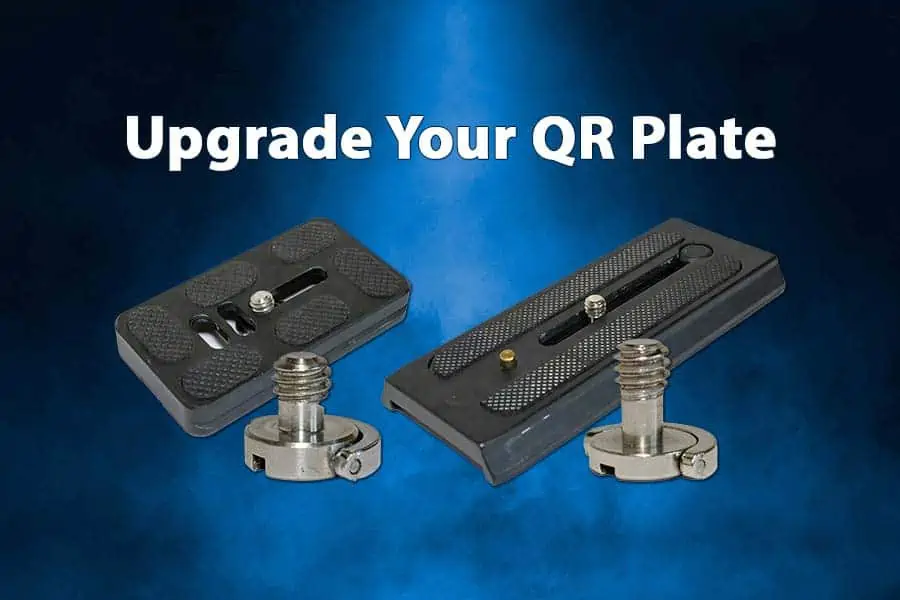DIY Video Studio is supported by its readers who use the affiliate links or ads on this site. As an Amazon Associate, I earn from qualifying purchases. Thank your support if you use any of the links.
If you shoot videos or possibly take photographs, there’s a good chance that your tripod has a sliding or quick-release plate. It’s this plate that your camera attaches to, probably with a ¼-20 screw, although often the plate is also supplied with a 3/8-16 screw for larger cameras.
The trouble is that those screws are likely to have a standard slotted head. That means you’ll need a tool, like a flathead screwdriver, a coin, or even a knife to have enough leverage to secure your camera to the plate or to remove it. I don’t know about you, but I frequently don’t have any of those things on me when I’m out on a shoot. I end up having to tighten the tripod thumbscrew with my fingers, but I can never apply enough of a turning force to get the screw tight and my camera secure. The result is that my camera tends to come loose. Given the cost of a camera and lens, that’s hardly ideal.
How to secure your camera to your tripod without a screwdriver
The head of a standard tripod or quick-release plate screw is slotted or even has a hole for a hex bolt. Both of those require an appropriate tool to tighten or remove them.
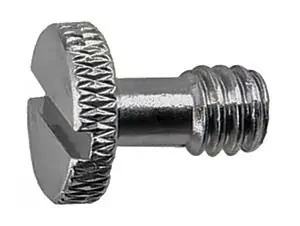
What you need instead is the same type of screw but with a D-ring. As the name suggests, it’s like a half-ring that pivots on the rim of the screw. As you can see in this image.
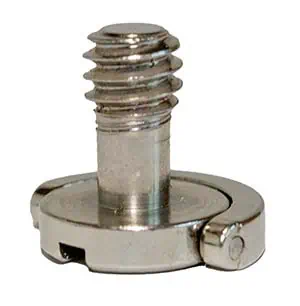
Normally the D-ring sits flush with the head of the screw, but when you need to tighten or remove the screw the D-ring can be flipped up and used as a kind of handle to turn the screw.
For the cost of a few dollars, you can switch the original screw for one with a D-ring. It’s this little upgrade that will make your life a lot easier and make your camera gear a lot more secure. That simple flip-up handle lets will let you apply a greater turning force to the screw, whether you’re attaching or removing your camera.
Getting the correct tripod D-ring screw
As you can see from this image, tripod screws come in a variety of forms. Although they all have a shaft that ends in about 5mm of screw thread, the rest of the screw can vary in shape. The shaft can be long or short. The screw head can be small or wide. The rim of the screw head can be plain, knurled, or have a D-ring. The following image shows some of the ones in my camera bag.
For this upgrade of your tripod or quick-release plate, you obviously need a screw with a D-Ring, but it also needs to be the correct length. At least, approximately the right length.
If it’s too short, it won’t be able to slide along the full length of the slot on the plate. That’s because the slot matches the width of the unthreaded part of the screw shaft. The threaded portion at the end of the screw is wider than the slot. That’s deliberate, it stops the screw from falling out of the plate.
However, if the screw is too long, you’ll never be able to tighten down the camera onto the plate. That’s because the mounting hole on the camera is only about 6-8mm deep and won’t accommodate the extra length of the screw.
The length of the screw you need will depend on the quick-release plate you already have.
The unthreaded shaft of the screw needs to be slightly longer (about a millimeter) than the thickness of the metal along the slot of the quick-release plate. The slot on smaller quick-release plates, like this one, is only about 2 or 3mm thick, so a short screw, where the unthreaded shaft is about 3mm, will be ideal.
For big sliding quick-release plates, like those on the Manfrotto 501, 500AH, etc. fluid head, will need a longer screw, with an unthreaded shaft of about 5-6mm.
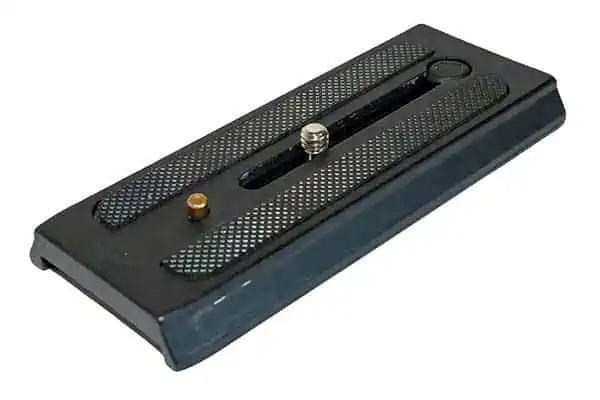
The best, and easiest way to judge how long the screw needs to be is to check the screw that came with your quick-release plate. You’ll need to remove the screw from the plate, but I explain how that’s done in the next section. With the screw removed from the plate, you can measure the unthreaded length of the screw and the unthreaded part.
For the small quick-release plates, you want the unthreaded part of the shaft should be about 3-4mm and the threaded part 4-5mm.
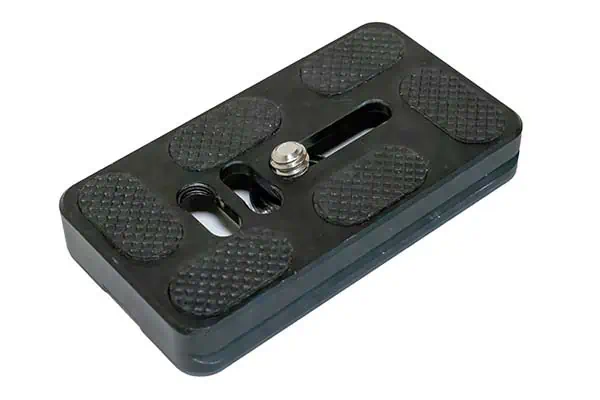
For the larger sliding quick-release plates, you want the threaded part to be about 5mm and the unthread part to be about 5-6mm.
These are approximate dimensions and a little variation in the length should be OK. The main thing is that the threaded part should equal or slightly less than the depth of the threaded mounting hole on your camera, and the unthreaded part of the shaft should be very slightly longer than the thickness of the quick-release plate.
If you can’t measure the size of the screw, you may be able to eyeball it by comparing it to the image in an online listing on Amazon or eBay.
Replacing the screw on your tripod’s quick-release plate
Once you have the new D-ring screw, you’ll need to fit it by first removing the old screw.
Changing the screw on small quick-release plates
On the smaller quick-release plates, you’ll notice one end of the slot or slots looks as if it has been drilled out to a slightly larger width. Look closely and you may see that the sides of that hole are threaded. You’ll need to slide the screw into that hole, engage it with the threads, and unscrew it from the plate.
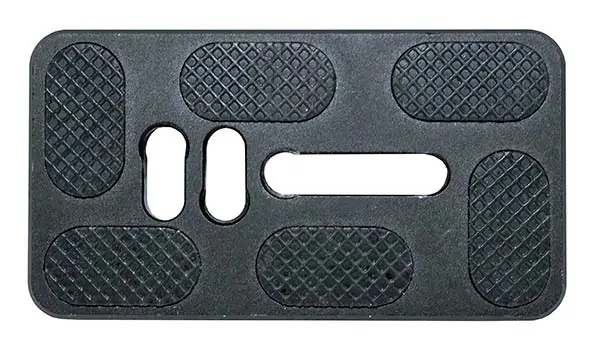
Changing the screw on sliding quick-release plates
If you have the larger sliding quick-release plate, there is a larger drilled hole at one end of the slot. It is filled with a rubber stopper to prevent the tripod screw from falling out of that end of the slot. Press the top of the rubber stopper with your thumb until it is slightly pushed through. Then turn over the plate and pull off the stopper.
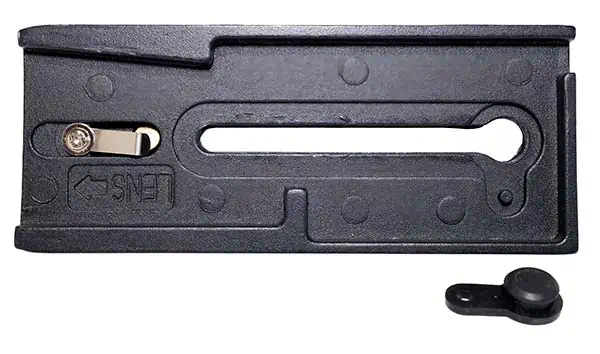
You can now slide the screw through the hole at the end of the slot and remove it.
Final thoughts
You now know how to change the screw on a camera tripod quick-release plate. It really is worthwhile changing from the normal thumbscrew type to a D-ring. Not only you will be able to secure your camera properly, you’ll also be able to do it without the need for any tools.
About the author: Tosh Lubek is a multi-award-winning broadcaster, writer, and video producer, with 40 years of experience in professional broadcasting and has been using Canon video and stills cameras since 2010. He has worked with radio and TV broadcasters, advertising agencies, and direct clients on a variety of projects including radio and television advertising, online video production, corporate videos, award ceremony motion graphics, and theme park sound design. Tosh has won numerous awards, including a Radio Academy Awards Gold Sony, a Gold, Silver, and Bronze World Medals in the New York Festivals International Advertising Awards. Since about 2007 he has been creating YouTube videos. Tosh has been a sponsor of the “video booth” at HashTag Business Events across the UK.
Recent Posts
Recently, I shot several customer testimonial videos in 4K for a client when the overheating warning on my Canon EOS R6 appeared. In fact, it appeared three times in five sessions during the day of...
Why Every Photographer Should Have a Nifty-Fifty 50mm f/1.8 Lens
If there’s one lens nearly every photographer should own, it’s the 50mm f/1.8 - better known as the “nifty fifty.” This affordable lens provides impressive quality and versatility, making it...


